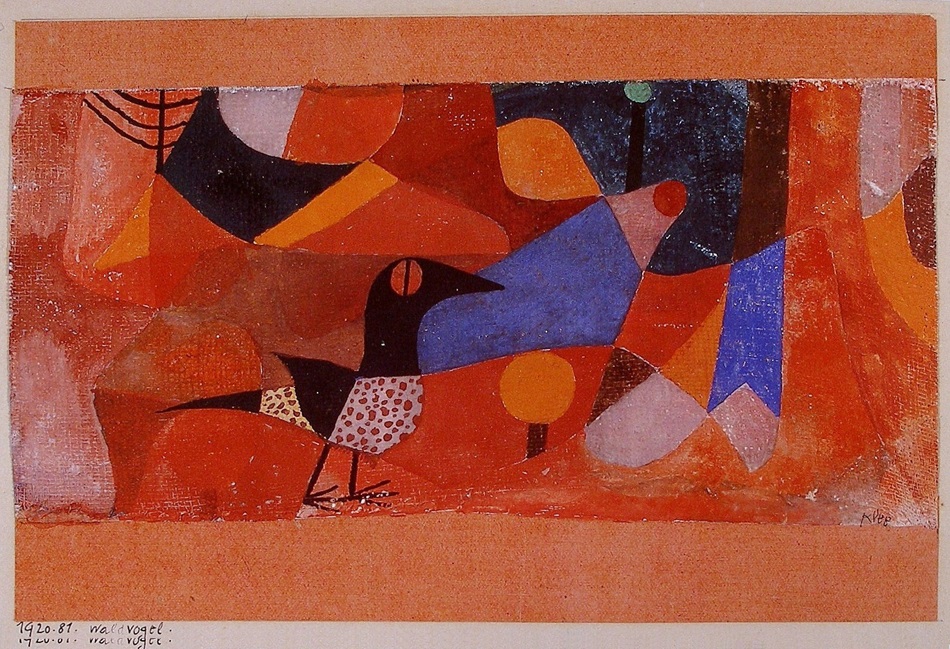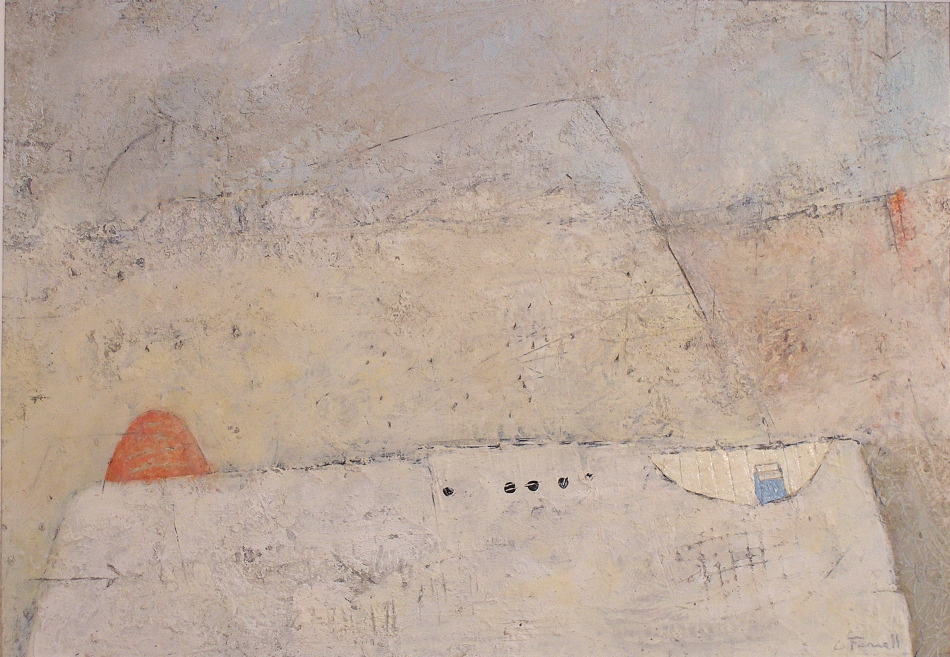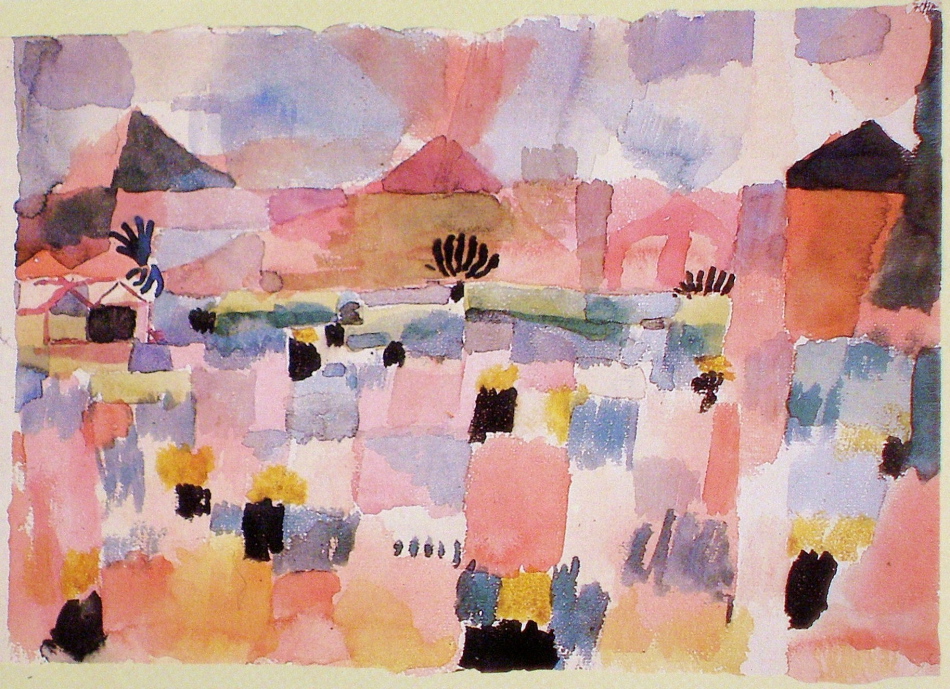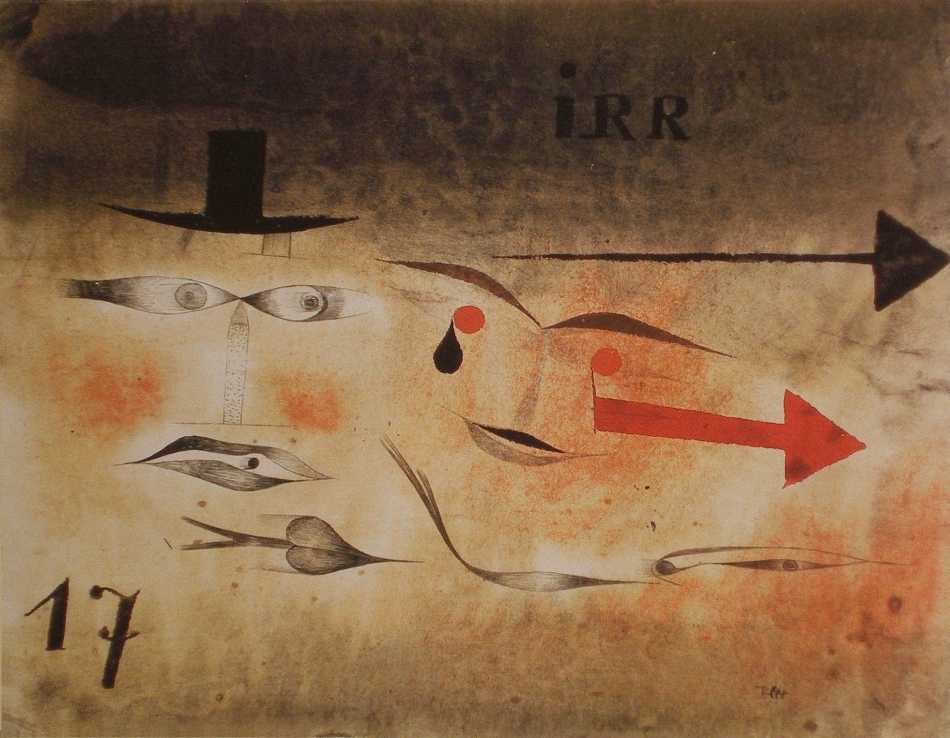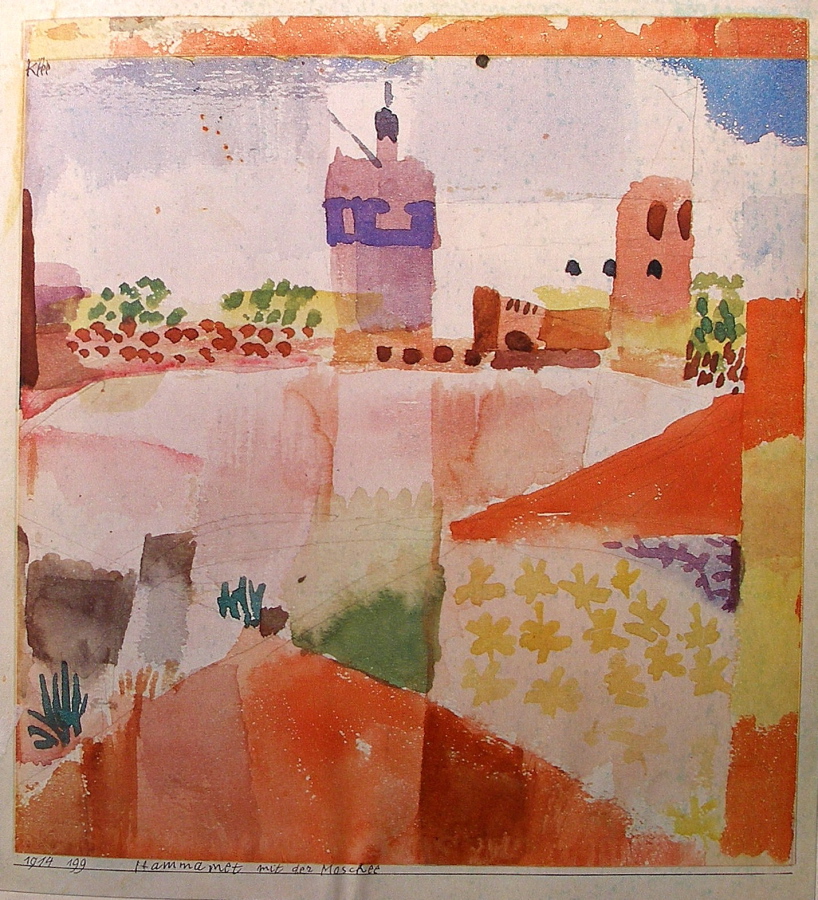Klee is one of the great masters of colour and composition, as this gorgeous painting conveys. I marvel at his sophistication and will do my best to convey his colour temperature ratio and rhythmic integrations.
Colour temperature ratio is the relationship of warm and cool. We can see it in the influence of the cool blues on the warm orange and red shapes. The blues poetically energize the warms without competing, creating lyrical variations that are music for the eye.
The black shapes are beautifully balanced and supported by the dark grayish shapes as well as three smaller brown shapes. Can you feel the relationship of the bird’s gaze with the brown shape at the right edge of the painting and how the other two brown shapes return you to the bird? It’s wonderful.
The sensitive parallels provide a structural rhythm that is more felt than seen. One great example is the relationship of the bird’s front leg, the black line in its eye, the brown line under the orange circle and the black line leading to that magnificent green circle. The other leg has parallel support as well.
The background shapes run into each other in a number of places, integrating the painting beautifully. The bottom of the foreground shape of the bird’s neck connects to the edge of the blue shape beautifully. Klee masterfully provides exceptions to the integrations such as the closed shapes of the circles and where the orange touches the blue just above the bird’s beak. We sense the variation.
Klee used the consideration of pattern within shapes on the bird. To hold the viewer just perfectly.
I think how Klee sensitively provides the feeling of the forest is magnificent and I absolutely love that green circle which is beyond explaining.

